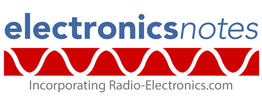Home » Component data » Op-amp data » this page
OPA392 Operational Amplifier Data: low noise, input bias, & offset voltage
Key data for the OPA392 low offset, low noise, low input bias operational amplifier:- key electrical parameters, performance, features, pinout, package type and many other key datasheet details.
The OPA392 and others in its family of operational amplifiers provide ultra-low offset, offset drift, and input bias current with rail-to-rail input and output operation.
In addition to this they provide precision dc accuracy, the ac performance optimized for low noise and fast-settling transient response.
This means that the OPA392 along with its other family members, OPA2392, and OPA4392 an excellent choice for driving high-precision analog-to-digital converters (ADCs) or buffering the output of high-resolution, digital-to-analog converters (DACs).
Key details and performance parameters for the OPA392 operational amplifier.
| OPA392 op-amp datasheet parameters & data |
|
|---|---|
| Parameters | Details |
| Op-amp type | Low offset, low noise, low input bias |
| Package type | 5 pin SOT-23 and SC70 |
| Max supply voltage (v) | 6V single, ±3V dual, recommended operating 1.7 to 5.5V total |
| Power dissipation (mW) | |
| Max differential input (V) | |
| Junction temperature (°C) | 150 |
| Input offset voltage | ±125µV |
| Input offset current (nA) | ± 0.01 typ, ±0.8pA max |
| Input bias current (nA) | ± 0.01 typ, ±0.8pA max |
| Input resistance (MΩ) | |
| Input voltage range (V) | |
| Open loop voltage gain | 110min, 132typ dependent upon conditions |
| Output voltage swing (V) | |
| Common mode rejection ratio, CMMR | 75 typ, max 120 dB |
| Supply voltage rejection ratio, PSRR | ±30µV/V |
| Gain bandwidth product | 13MHz |
| Slew rate | 4.5V/µs falling, 3.5V/µs |
| Quiescent supply current | 1.22 mA typical, 1.4 mA max. |
Outline & pinout:
Explanation of operational amplifier parameters
| Parameter | Explanation |
|---|---|
| Max supply voltage | This is the maximum voltage that should be applied to the operational amplifier. As many of them operate on dual supplies this may be given as ± representing the maximum for both the positive and negative supplies. |
| Power dissipation | This is the maximum power dissipation permissable for the device. |
| Maximum differential input | This is the maximum difference that may exist between the two inputs, -IN and +IN. It can normally be in either sense so it is stated as ± xxV. |
| Junction temperature TJ | This is the maximum temperature that the actual IC chip can operate at, expressed in °C. Remember the ambient temperature will be much less than the actual silicon temperature. |
| Input offset voltage VOS | This is the small DC voltage difference that must be applied between the two input terminals to make the output voltage zero, even when the input signal is zero. |
| Input offset current IOS | This is equal to the difference between the input bias current at the non-inverting terminal (IB+) minus the input bias current at the inverting (IB- ) terminal of the amplifier. |
| Parameter | Explanation |
|---|---|
| Input bias current | This is the DC currents flowing into or out of the amplifier's input pins to create a defined operating point during normal operation. |
| Input resistance | This is the load resistance resulting from the operational amplifier as seen by a preceding stage. |
| Input voltage range | The op-amp input voltage range, also known as the common-mode voltage range (CMVR), is the range of voltages that can be applied to the op-amp's inputs while maintaining linear and predictable operation. |
| Large signal voltage gain | |
| Output voltage swing | |
| Common mode rejection ratio, CMMR | |
| Supply rejection ratio | |
| Slew rate | |
| Supply current | |
| Power consumption |
These are the main operational amplifier parameters that have been included in our list. There are others, but these help quantify the main elements of the performance of the regulator, but are normally deemed to be less important.
Please note, that the data given is the best estimate we can give within a tabulated summary of this nature. Parameters also vary between manufacturers. Electronics Notes cannot accept any responsibility for errors, inaccuracies, etc, although we do endevaour to ensure the data is as accurate as possible.
Notes and supplementary information
• Availability & sources
The OPA392 is available from a number of stockists and electronic component distributors many of which are given in the table below.
OPA392 Component Distributor, Stock and Pricing
• Further details
The OPAx392 series of op-amps including the OPA392 incorporate the TI e-trim operational amplifier technology and this enables these chips to achieve ultra-low offset voltage and offset voltage drift without any input chopping or auto-zero techniques.
This technique enables ultra-low input bias current for a huge variety of applications including sensor inputs or photodiode current-to-voltage measurements. This creates high-performance transimpedance stages for optical modules or medical instrumentation and other applications.
 Written by Ian Poole .
Written by Ian Poole .
Experienced electronics engineer and author.
Return to Component Data menu . . .



